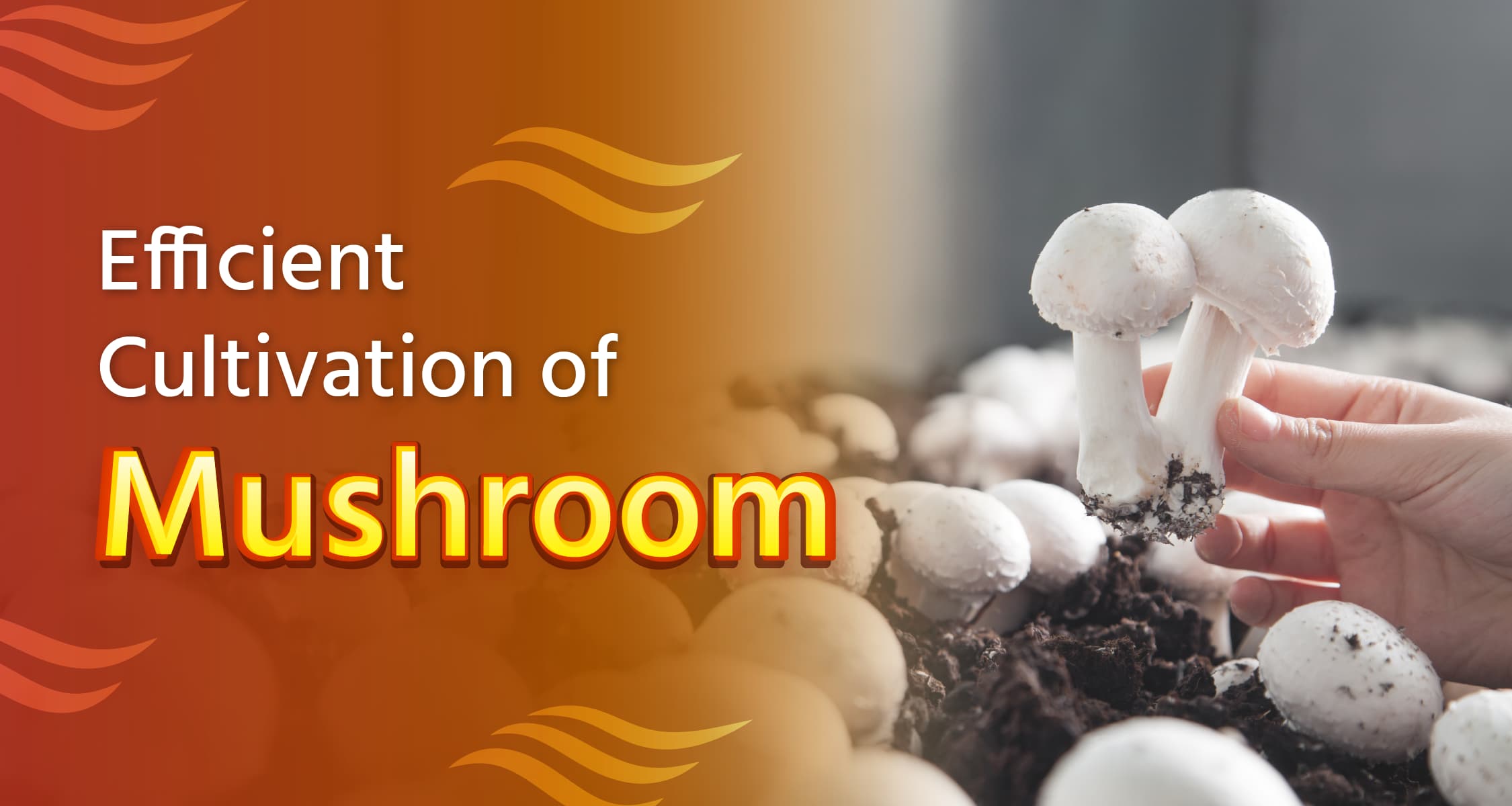पोस्ट विवरण
Cultivation of Mushrooms

Due to the increasing demand for mushrooms in the market, there are immense opportunities for its cultivation. Cultivation of mushrooms requires low cost, less space, and can be prepared in less time, hence this can aid substantially in earning more profit. If you also want to do mushroom cultivation, please go through the post to gather important information related to it.
Where Can You Do Mushroom Cultivation?
- Mushroom cultivation can be done not only in plains but also in hilly areas.
- In addition to this, its cultivation can be done in any weather and region by creating an artificial environment in a greenhouse.
Suitable Time for Mushroom Cultivation
- The time from May to October is optimal for mushroom cultivation.
- It can be cultivated throughout the year in simulated environments.
Suitable Environment for Good Mushroom Yield
- The optimal temperature for a good mushroom yield ranges from 14 to 18°C. Additionally, humidity should be around 85%.
Some Major Types of Mushrooms
- Several types of mushrooms are cultivated, with approximately 70 varieties being farmed. Among the prominent ones are Button Mushroom, Oyster Mushroom, Milky Mushroom, Paddy Straw Mushroom, Shiitake Mushroom, Ganoderma Mushroom, Pleurotus Mushroom, etc.
- Apart from these, there is also a type of mushroom known as the Morel Mushroom. Despite being rich in medicinal properties, its cultivation is not undertaken. This type of mushroom is naturally found in dense forests of high-altitude regions. Due to its scarcity, it is one of the most expensive vegetables.
How is Mushroom Cultivation done?
Mushroom cultivation is primarily done in 3 ways
- Hanging Method: This method is suitable for cultivation in limited space or where space is scarce. A layer of compost is placed in a plastic bag, followed by the addition of mushroom seeds, which are then covered with another layer of compost. Finally, the mouth of the plastic bag is tied with a string and hung on a wooden stand.
- Making Beds in Soil: In this method, beds are prepared in selected soil first, then compost is added to the beds, and mushroom seeds are sown. Regular maintenance is required in this method.
- Making Beds in Racks: In this method, racks are first prepared at a height above the ground using bamboo or other wood. Compost is spread on the racks, followed by the sowing of mushroom seeds.
When to Harvest Mushrooms?
- Small mushrooms begin to emerge 35 to 40 days after sowing or 15 to 20 days after casing the soil.
- Within 4-5 days, small mushrooms grow into larger sizes and can be harvested at this time.
- Harvest mushrooms by twisting them off or cutting them with a sharp knife.
Things to Keep in Mind While Cultivating Mushroom
- Adequate Moisture: Proper moisture is needed for seed germination, so sprinkle water every 2 to 3 days.
- Avoid Direct Sunlight: Ensure the room where mushrooms are cultivated doesn't receive direct sunlight, as it can reduce moisture levels.
- Temperature Control: Cover room windows with a damp cloth during increased temperatures.
- Hygiene Practices: Clean hands thoroughly with soap before touching compost or mushroom seeds.
- Cleanliness: Maintain proper cleanliness in the room.
Where to Get Training for Mushroom Farming?
The government organizes training programs periodically to promote mushroom farming. Often, aspiring mushroom farmers are also provided with incentives. Additionally, many agricultural universities offer training in mushroom cultivation. If you're interested in mushroom farming, you can receive training from the following institutions:
- Dr. Rajendra Prasad Central Agricultural University, Pusa, Bihar
- Odisha University of Agriculture and Technology, Bhubaneswar, Odisha
- Chaudhary Charan Singh Haryana Agricultural University, Hisar, Haryana
- Maharana Pratap University of Agriculture and Technology, Udaipur, Rajasthan
- Acharya Narendra Deva University of Agriculture and Technology, Faizabad, Uttar Pradesh
- Kerala Agricultural University, Thrissur, Kerala
Have you ever tried mushroom farming? If yes, how profitable is it for you? Share your answers with us in the comments. For more interesting and informative agricultural content, follow the 'Krishi Gyan' channel now. Also, don't forget to like and share this post.
Frequently Asked Questions (FAQs)
Q: How many days does it take for mushrooms to be ready?
A: Mushrooms typically take around 3-5 weeks to grow. About 4-5 days after mushrooms emerge, they grow significantly in size and can be harvested.
Q: How much does mushroom cultivation cost?
A: The cost of mushroom cultivation depends on factors such as the variety of mushrooms, availability of raw materials, location, etc. For small-scale button mushroom cultivation, the cost per 1000 square feet area can range from approximately ₹50,000 to ₹1,00,000.
Q: Which mushroom is most profitable in India?
A: Button mushrooms have a high demand in the Indian market, making their cultivation most profitable for farmers. Additionally, farmers also achieve good profits from oyster mushroom cultivation.
Q: Where are mushrooms grown in India?
A: Mushrooms are grown in various parts of India, but major mushroom-producing states include Bihar, Maharashtra, Odisha, Punjab, Haryana, Uttar Pradesh, and Kerala. Additionally, some other states like Jammu and Kashmir, Tamil Nadu, and West Bengal are also emerging as prominent mushroom-producing states in India.
जारी रखने के लिए कृपया लॉगिन करें

फसल चिकित्सक से मुफ़्त सलाह पाएँ
